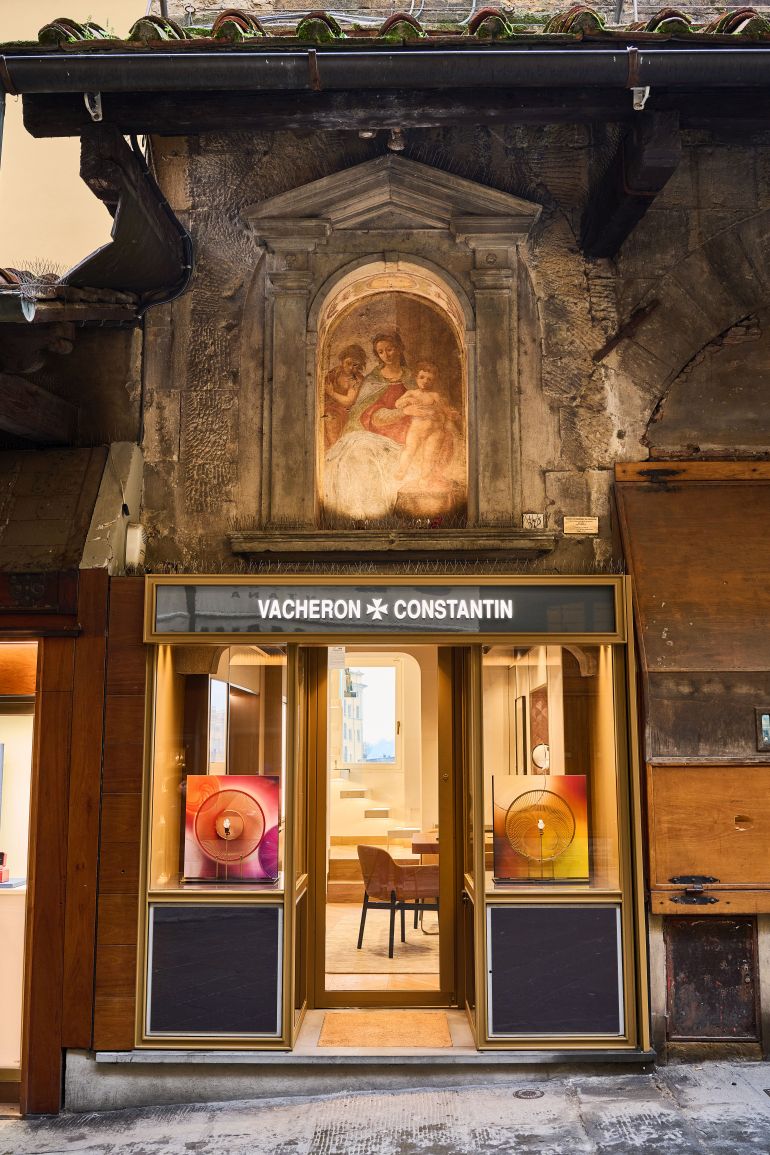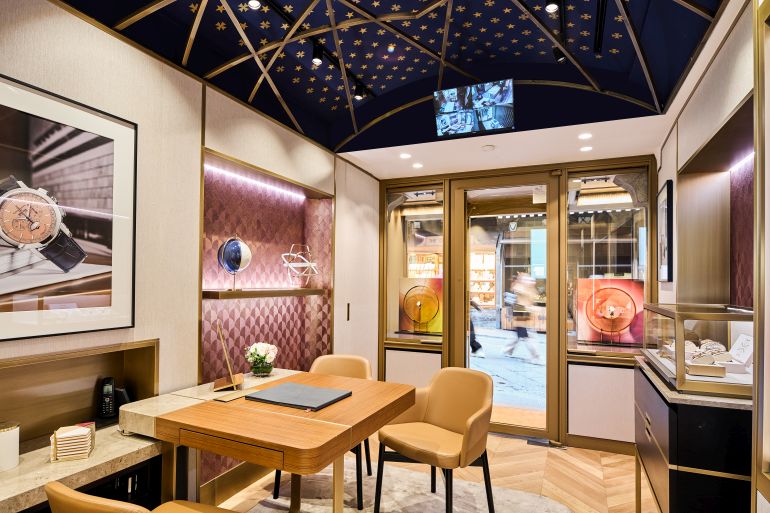On the occasion of the renovation of its spaces, the boutique Vacheron Constantin in Florence (located on the Ponte Vecchio, at number 52/R) is exhibiting a selection of creations from the Maison's Heritage Private Collection. Chosen from the approximately 1,600 timepieces that make up the Heritage Private Collection, these watches testify to a production characterised by purity of form.
Vacheron Constantin is part of the history of the Ponte Vecchio in Florence, a fascinating historical structure rebuilt in 1345 and made unique by the famous Vasariano corridor, built in 1565. As well as the goldsmiths' workshops that have characterised the bridge with their presence over the centuries. The renovation of the boutique located at no. 52/R was designed and carried out with the utmost respect for the architecture, decorations and history of this building. The boutique is located within the space of the former chapel of the Oratory of the Holy Sepulchre. From the outside, one can appreciate the two shop windows and the shop's 'Vacheron Constantin' sign, surmounted by a tabernacle bearing the image of a 17th-century Madonna blessing passers-by.

The concept of elegance is one of the main characteristics of Vacheron Constantin's watchmaking. Cultivated as an art form, elegance imposes itself naturally. This approach to watch design is inspired by two artistic movements that marked the beginning of the 20th century. Founded in Weimar in 1919 by the architect Walter Gropius, the Bauhaus exerted a significant influence on the world of art and craftsmanship as it set out to lay the foundations for a new type of society. A fertile ground for innovative experimentation, the Bauhaus sought to unite technique and aesthetics, fine arts and industry by aiming for simplicity and the durability of objects dictated by function.

The spiralling volutes of Art Nouveau then gave way to pure forms and clean lines, suited to the new demands of industrial production. From the 1920s onwards, ornaments were replaced by Art Deco's quest for order and symmetry, whose strict geometric character marked a return to classical stylistic features.

"This idea of purity, which for Vacheron Constantin is synonymous with elegance, is a signature present throughout its history, but which took on a much more precise form at the beginning of the last century, explains Christian Selmoni, Style & Heritage Director at Vacheron Constantin. "Regardless of the complexity of the mechanisms and complications, purity expresses a watch design in which simplicity becomes refinement. The most important characteristic of the Maison, always in step with the times through creations that symbolise the trends of the era, is undoubtedly its ability to preserve this horological soul through the various stylistic interpretations of its timepieces, of which there have been many since 1755, the year Vacheron Constantin was founded."

The Vacheron Constantin timepieces in the Less'Ential exhibition, visible until 7 February, all represent the Maison's stylistic research. From pocket watches produced until the second half of the 20th century to wristwatches, these creations convey the desire to subject mechanical constraints to clarity of design and legibility of functions. This type of minimalism has elegantly traversed successive eras and periods, demonstrating an ability to adapt to all styles and materials. Regardless of the type of display - classical or off-centre, as in the case of the jumping hours - the quest remains the same: that of beauty through simplicity, to focus on 'Less'Ential'.
Jubilee' watch in yellow gold with small seconds, black dial (1935).





